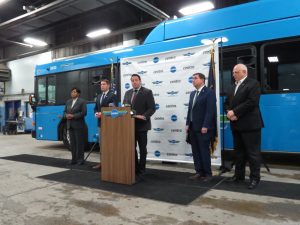Upstate has used robots to perform minimally invasive surgeries, including brain surgery, and they’ll now “serve another role by helping alleviate staff shortages brought on by Covid.”
The use of the TUGS will free up “critical time” for staff to focus on patient care, the hospital noted.
Beginning with the transport of drugs from the pharmacy within the hospital to the cancer center, Upstate plans to use the new fleet of transport robots to also transport medical supplies, drugs, linen, meals, and, potentially, even clinical equipment.
(Sponsored)

Fraud Contingencies Plans Are Essential
Your business likely has a disaster recovery plan in place—procedures for handling fires, natural disasters or other crises that could disrupt operations or endanger lives. While a fraud contingency plan

CECL Accounting Standard: What You Need to Know
The Financial Accounting Standards Board Accounting Standards Codification (FASB ASC) 326, Financial Instruments-Credit Losses, became effective for all entities on January 1, 2023. This accounting standard introduces the current expected
The robot uses lidar, laser, sonar, and infrared sensors to navigate. It can get on and off the elevator. When it arrives at its destination it can let itself in. And each of its seven drawers can only be unlocked at the destination it was programmed for and by the person the delivery is for.
The fleet of 14 TUGS are all about 4 feet tall and can travel at a rate of 30 inches per second. On average, TUGS are traveling 370 miles a week around hospitals, delivering thousands of pharmacy orders, linens and meals, among other things.
“The possibilities are endless and only bound by what can be safely transported,” Steve Roberts, director of autonomous machines at Upstate, said. “Even now, we are thinking about how best to integrate these robots with drones. As our nationally recognized drone program continues to evolve, this handoff will become essential to supporting the transport needs of our remote sites.”
Upstate says hospitals across the country are turning to robots to help with staff and nursing shortages and the medical-robot market is projected to grow into a $43 billion industry in the next 5 years. Currently, 37 Veterans Affairs hospitals use the same TUGS made by Aethon, as does Stanford Hospital and University of California San Francisco Medical Center.




